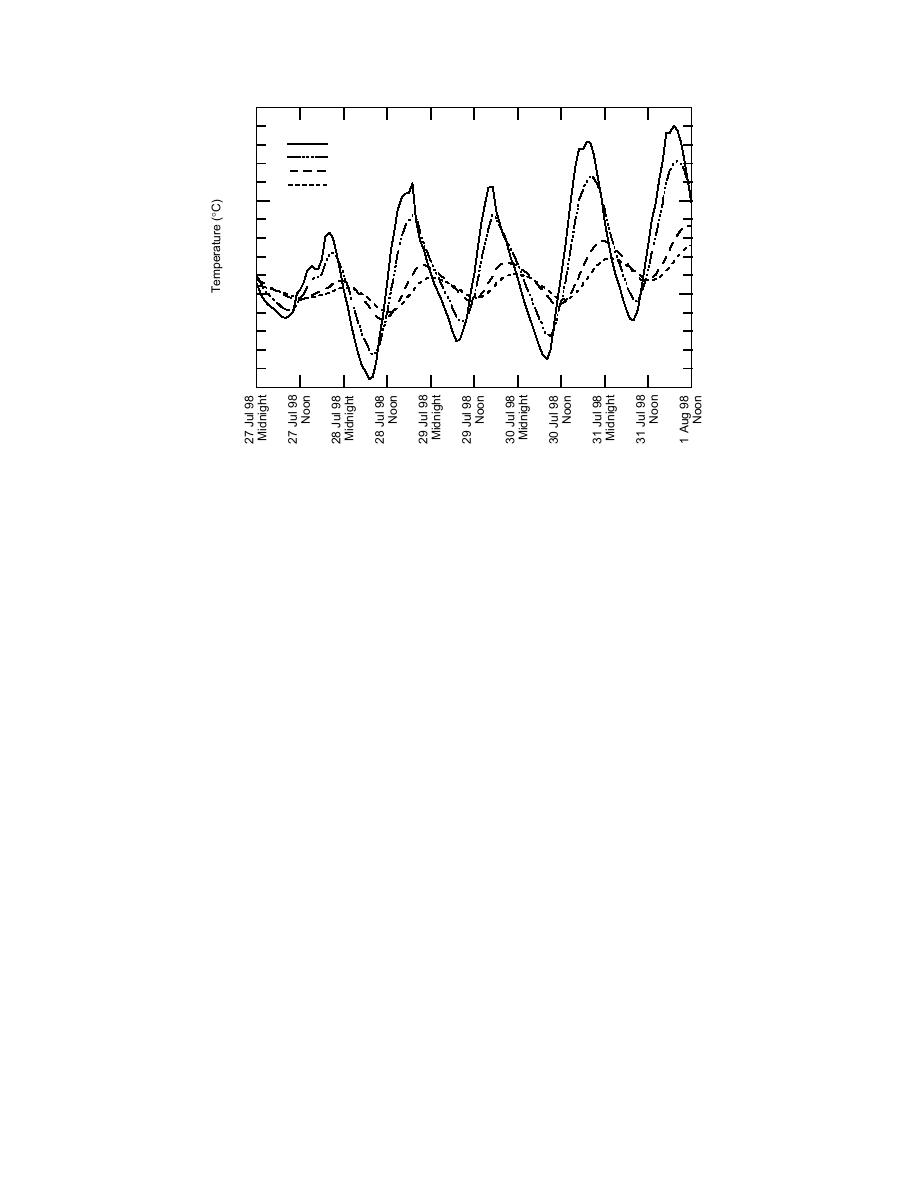
25
5 cm
10 cm
20 cm
30 cm
20
15
10
Figure 2. Diurnal temperature variations of surface sediments at ERF.
90% of the suspended sediment that settles in the
Physical processes of Eagle River Flats
There are many natural mechanisms in action
ponded areas of ERF is 0.02 mm or finer. The low
at Eagle River Flats that contribute to the persis-
salinities result in very low settling rates for these
tence of white phosphorus. The presence of wa-
fine, glacially derived particles. Thus, when
ter, flooding tides, low siltation rates, and the
flooding tides occur, very little sediment is depos-
northern climate are all factors. Any remediation
ited away from the area adjacent to the river
option used in ERF needs to take into account
banks, around 5 to 10 mm annually. Sedimenta-
these processes and their effect on the natural
tion rates vary depending on distance from the
attenuation of the contaminant.
river or ocean and time of year. These are gross
Eagle River Flats is located off the Knik Arm of
sedimentation rates and do not take into account
Cook Inlet, where the tides are the second highest
consolidation of the sediments, necessary to pre-
in the world, ranging over 13.3 m from high to
vent penetration by dabbling ducks and resus-
low tide. Knik Arm is also the repository of sever-
pension of the contaminant. Consolidation can
al major glacial rivers, including the Matanuska,
easily halve the depth of the sedimentation layer.
Susitna, Knik, and Eagle Rivers. Flooding tides
In addition, ice plucking of the sediments during
occur as often as every 27 days and can last from
winter flooding tides can remove the loose sedi-
two to seven days. In most cases, tides do not
ment layer, transporting it away from the ponds.
reach a flooding level (31.1 ft or 9.48 m msl) dur-
Other system forces also affect the distribution
ing the monthly lunar cycle, and over 100 days
and persistence of white phosphorus in a salt
may pass between flooding tides.
marsh like ERF. After a flooding tide, the water
The salinity level of the waters of Knik Arm
drains back into the Eagle River or Knik Arm
tends to be low while sediment load is high.
through a series of swales and gullies. Over the
Salinities in Knik Arm range from about 15 to 25
course of time, erosion of the headwalls leads to
ppt, while sediment loads can approach 3,000
gully advancement into ponded areas. This ad-
mg/L. During flooding tides, these low salinities
vancement, if far enough, may drain parts or all
are further reduced by dilution with the nonsa-
of a ponded area. Erosion rates and direction of
line Eagle River water. Salinities of the ponded
advancement are very difficult to predict and
and marsh areas of ERF range from 2 to 20 ppt,
may differ over an order of magnitude from year
with the deeper ponds registering around 2 to 9
to year. Thus, gully erosion cannot be counted on
ppt. The sediment carried by the tides and Eagle
to significantly impact the integrity of ponded ar-
River consists of a large amount of fine, glacially
eas over the short to moderate term (<20 years).
derived silts. Grain-size analyses indicate that
The transport of white phosphorus out of con-
4



 Previous Page
Previous Page
